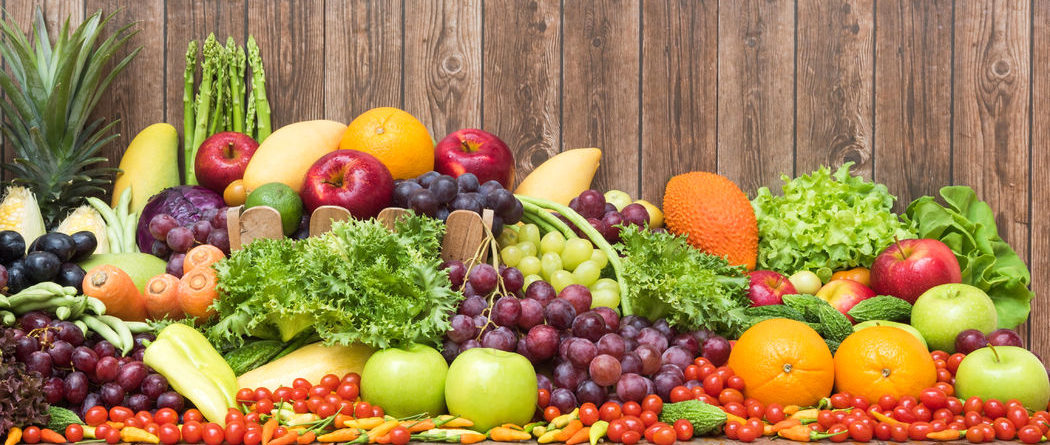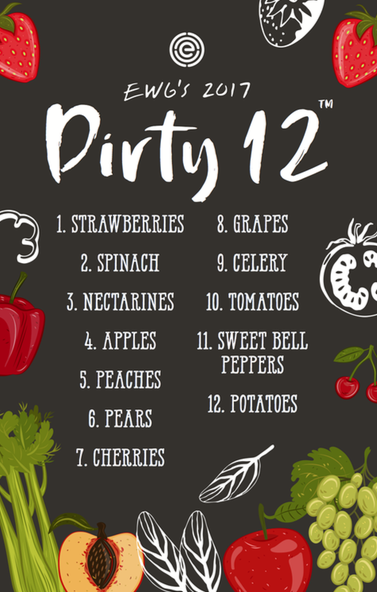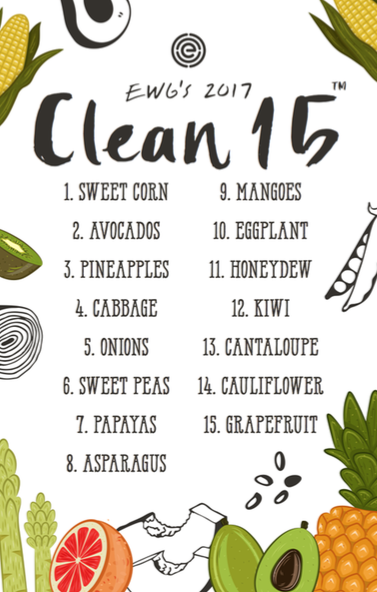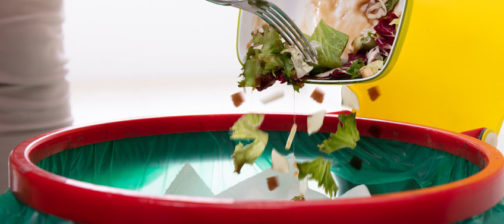Written by Julie Paiva, CHHC
We have all heard that eating organic is best for our bodies and our planet. Most people would love to buy and consume all organic produce without hesitation. However, it isn’t always possible for us to do this. It might be finances or availability that keep us from eating a fully organic diet. What do we do when something holds us back from picking organic produce?
Pesticides are Toxic!
Are you concerned about pesticides in your food? Eating fresh fruits and vegetables are the best way for us to obtain the nutrients that support our body, but these pesticides that come along with them often outweigh the benefits. Pesticides are toxic by design. They are created to kill living organisms like insects, plants and fungi. Many of the pesticides used in the United States and around the world can pose health concerns for people too. Many times these pesticides cannot be removed through washing or peeling your produce, and on occasion they can even be found inside of the produce.
Pesticide Residue Varies!
The EWG (Environmental Workers Group) provides us with some answers. Each year they produce a list of the Dirty Dozen and the Clean Fifteen. The list is generated from their evaluation of nonorganic fruits and vegetables and ranks them based on the levels of pesticides found on and in the crop. They sort the produce into two lists. The Dirty Dozen are the 12 fruits and vegetables with the highest level of pesticide residue. The Clean Fifteen are the fifteen fruits and vegetables with the lowest level of pesticide residue. These lists can help those of us whose pocket books don’t necessarily support our strong beliefs about eating organic.
Shop Smarter by Utilizing these Lists!
When we cannot afford to buy fully organically, then we can use these lists as a guide. Try to buy items on the dirty dozen list only from organic sources. The produce on the clean fifteen list can be purchased from conventional sources if needed. The lists you see below are a solid reminder that we still have a lot of work to do when it comes to cleaning up our food system. In this 2017 study from the EWG, they found that almost 70% of 48 nonorganic crop samples tested positive for at least one kind of pesticide. A single strawberry for example had 20 various kinds of pesticide residue. It is important that when our finances allow we support our sustainable farmers and in turn provide optimal foods for our body!
*A small amount of sweet corn, papaya and summer squash sold in the United States is produced from GMO seedstock. Buy organic varieties of these crops if you want to avoid GMO produce. And of course, if adhering to the Dr. Brown Diet, it is best to avoid sweet corn and all potatoes except sweet potatoes altogether..
Visit EWG’s website for more information and to stay-up-to-date with the newest list each year!







[…] and medications. (Check out some of Marpe Wellness’ past blogs for more information on the dirty dozen, choosing eggs and grass-fed […]